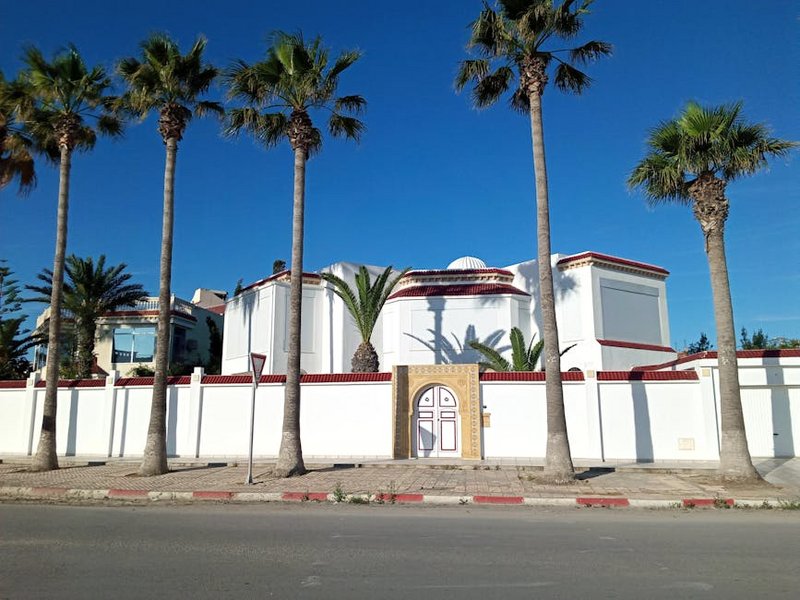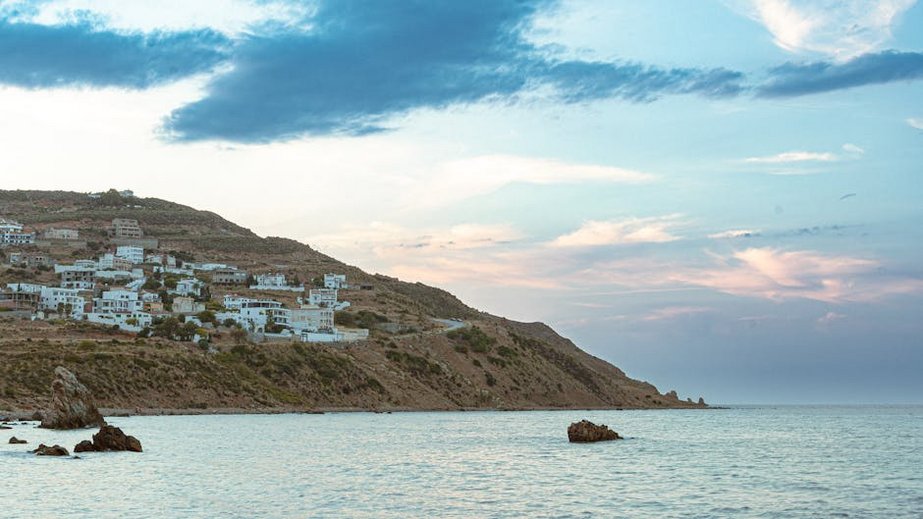Tunisia Matmata Underground Houses: Ancient Berber Architecture
Visiting the Tunisia Matmata underground houses immerses you in a unique architectural marvel dating back centuries, where Berber communities carved homes into soft rock for natural insulation. These troglodyte dwellings maintain cool temperatures around 68°F (20°C) year-round, offering fascinating insights into sustainable desert living and cultural heritage. This guide covers everything from historical context to practical travel tips for exploring these iconic subterranean structures.
Essential Information about Matmata
Matmata sits in southern Tunisia’s arid landscape, characterized by dramatic hills and traditional Berber settlements that have adapted to extreme heat. The underground houses feature central courtyards surrounded by rooms dug into the earth, creating a natural cooling system that reduces indoor temperatures significantly. This architectural style evolved as a practical response to the Sahara Desert’s harsh climate, preserving ancient building techniques.
Local Berber families still inhabit many underground homes, sharing stories of their ancestors who developed these structures for protection and comfort. Tourism has grown since the 1970s when filmmakers used Matmata as a Star Wars location, bringing global attention to its unique dwellings. Visitors today can experience authentic hospitality while learning about preservation efforts for these historical sites.
Historical Background – What You Need to Know
Understanding Matmata’s history enriches your visit with deeper cultural appreciation.
- Berber tribes constructed the first underground houses over 700 years ago, using simple tools to excavate soft sandstone and create multi-room complexes.
- French colonial documentation in the early 20th century recorded Matmata’s population living entirely underground, with homes organized around shared community spaces.
- Modern recognition surged after 1976 when film crews transformed Sidi Driss Hotel into Luke Skywalker’s home, boosting tourism and conservation awareness.
- Budget travel costs $30-50 daily covering hostel dorms, public transportation, and self-guided exploration with meals from local markets and street food stalls.
- Mid-range options run $60-100 daily including underground hotel stays, rental car or private drivers, and guided tours with lunch at traditional restaurants.
- Luxury experiences exceed $150 daily featuring premium hotels with pools, private guides, and customized itineraries including nearby attractions like Chenini villages.
- Tunisia National Tourism Office
- Lonely Planet Tunisia Guide
Cultural Significance – Key Details
Berber traditions emphasize communal living and environmental harmony, reflected in the underground house layouts designed for extended families. Each dwelling typically includes a central pit courtyard called a “houch,” surrounded by arched rooms used for sleeping, cooking, and storage. This design fosters social interaction while providing shelter from desert winds and summer heat exceeding 104°F (40°C).
Local artisans maintain traditional crafts like wool weaving and pottery, often selling handmade goods to visitors supporting the economy. Respectful tourism helps preserve these cultural practices, with many families offering guided tours of their homes for small fees. Engaging with residents provides authentic insights into daily life in these extraordinary structures.
Geographical Context – Southern Tunisia Location
Matmata lies approximately 450 kilometers south of Tunis, nestled in the Djebel Dahar mountain range at an elevation of 600 meters above sea level. The region experiences arid desert climate with minimal rainfall, relying on ancient underground water systems for agriculture. Surrounding landscapes feature rocky plateaus, palm groves, and seasonal riverbeds that contrast with the subterranean settlements.
Accessibility improved recently with paved roads connecting Matmata to major cities like Gabès and Medenine, though remote areas retain rugged terrain. GPS coordinates place the village at 33°32’N 9°58’E, within driving distance of other Berber communities. The isolation historically protected cultural traditions while now attracting adventurous travelers.

Alt: “matmata-underground-courtyard-berber-architecture-desert”
Planning Your Tunisia Matmata Underground Houses Trip
Organizing your Tunisia Matmata underground houses adventure requires considering seasonal weather patterns, since summer temperatures often reach 100°F (38°C) making exploration challenging. Spring and autumn provide ideal conditions between 70-85°F (21-29°C) with clear skies perfect for photography and outdoor activities. Booking accommodations early secures stays in authentic underground hotels that fill quickly during peak tourism months.
Budget approximately $50-80 daily for mid-range travel covering meals, transportation, and entry fees to historical sites. Independent travelers can reduce costs by using shared taxis and eating at local cafes serving traditional couscous and tagine dishes. Guided tours offer valuable cultural context but increase expenses, so balance DIY exploration with expert-led experiences.
Best Time to Visit Matmata
Visit between March and May or September and November for pleasant temperatures ranging from 65-80°F (18-27°C) and minimal rainfall under 2 inches monthly. These shoulder seasons avoid summer crowds while providing comfortable conditions for exploring underground dwellings and surrounding desert landscapes. Winter visits from December to February bring cooler days around 55°F (13°C) but require warm layers for chilly evenings.
July and August see extreme heat above 100°F (38°C) reducing outdoor activity comfort, though underground homes remain naturally cool. Ramadan affects operating hours if it falls during your travel dates, with many services limited daytime. Plan around major festivals like the Matmata Date Festival in October for cultural immersion.
Budget Planning and Costs
Daily expenses vary based on accommodation style and transportation choices.
Essential Preparation Checklist
Pack lightweight, breathable clothing for daytime heat plus warm layers for cool desert nights, along with sturdy walking shoes for uneven terrain. Essential gear includes sunscreen rated SPF 50+, wide-brimmed hats, reusable water bottles, and power banks for limited charging options. Photography equipment should handle low-light conditions inside dwellings and bright exterior landscapes.
Secure comprehensive travel insurance covering medical evacuation, since remote areas have limited healthcare facilities requiring transfers to larger cities. Check visa requirements for your nationality, as many visitors receive 90-day stamps upon arrival. Learn basic French or Arabic phrases like “shukran” (thank you) to enhance interactions with local communities.
Top Attractions and Activities in Matmata
Matmata’s primary draw remains the underground houses themselves, with several family-owned dwellings open for public tours demonstrating traditional living arrangements. The Sidi Driss Hotel gained fame as Luke Skywalker’s childhood home in Star Wars, offering overnight stays in cave rooms decorated with film memorabilia. Nearby troglodyte villages like Toujane and Beni Aïssa provide comparative architecture styles within short driving distances.
Adventure seekers can book 4×4 desert excursions to surrounding sand dunes and mountain passes, often including Berber lunch experiences in nomadic tents. Cultural workshops teach traditional bread baking in underground ovens or weaving techniques using ancient looms. Evening storytelling sessions with elder residents share folklore and historical accounts passed through generations.
Must-See Highlights
Sidi Driss Hotel charges approximately $5 entry for non-guests, allowing photography of the iconic courtyard featured in multiple film scenes. Family-owned homes like Dar Jerbi offer authentic tours for $2-3, demonstrating daily life in underground rooms with original furnishings. The Matmata Ethnographic Museum displays historical artifacts and explains construction techniques with English translations.
Hiking trails connect various underground complexes, providing panoramic views of the desert landscape and opportunities for independent exploration. Local guides available at the tourism office lead two-hour walking tours covering hidden passages and architectural details. Morning visits avoid midday heat while capturing beautiful light for photography.
Hidden Gems and Local Favorites
Venture beyond main tourist sites to discover abandoned underground houses in surrounding hills, accessible via marked footpaths from the village center. These unrestored structures reveal original construction methods without modern modifications, though require caution when exploring unstable areas. Local cafes like Café des Troglodytes serve mint tea and traditional pastries in cave settings frequented by residents.
Berber families in outlying areas often welcome visitors for homemade meals featuring seasonal ingredients like figs and olives. Arrangements made through trusted guides ensure respectful cultural exchanges and fair compensation for hosts. Full moon nights transform the landscape with magical lighting, ideal for photography workshops booked in advance.
Star Wars Film Locations
Beyond Sidi Driss Hotel, several nearby sites served as filming locations for the original Star Wars trilogy, attracting movie enthusiasts worldwide. Hotel staff provide maps highlighting specific scenes shot in various courtyards and rooms, with photo opportunities recreating iconic moments. Nearby Ksar Hadada featured as a slave quarters exterior, now operating as a hotel welcoming visitors.
Guided Star Wars tours from Gabès or Djerba include transportation to multiple sites with behind-the-scenes stories from local extras. Dedicated fans should visit during May the Fourth celebrations for special events and screenings. Respect private property when photographing locations, as some areas remain family residences.
Practical Travel Information for Matmata
Reaching Matmata typically involves flying into Tunis-Carthage International Airport (TUN), then taking domestic flights to Gabès or Djerba followed by road transportation. Rental cars provide flexibility for exploring remote areas, with 4×4 vehicles recommended for unpaved mountain roads. Public transportation options include louages (shared taxis) from Gabès costing approximately $10 per person for the two-hour journey.
Accommodation ranges from basic hostels to unique underground hotels, with advance reservations crucial during peak seasons from October to April. Most establishments offer breakfast included in room rates, while lunch and dinner require visits to village restaurants. English proficiency varies, so carrying phrasebooks or translation apps facilitates communication.
| Category | Options/Features | Price Range (USD) |
|---|---|---|
| Accommodation | Underground hotels with traditional decor, hostels with shared facilities, guesthouses with family meals | $20-150 nightly |
| Transportation | Rental cars, shared taxis, private drivers, organized tours with guides | $15-100 daily |
| Food & Dining | Local cafes, hotel restaurants, family-hosted meals, market snacks | $5-25 daily |
| Tours & Activities | Guided house tours, desert excursions, cultural workshops, photography sessions | $10-80 per activity |


